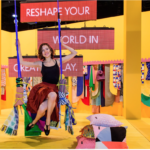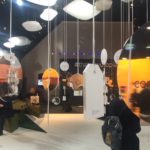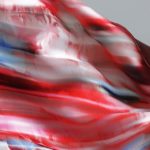Digital printing a market in big expansion
ITMA 2015 confirmed all forecasts on the growing market expansion of digital textile printing with Italy at the top for machines and technologies.
It was not enough a whole hall, the 18, to show all machines for digital printing of fabrics, so much so that some very significant from Korea and Switzerland were in other pavilions. The growth of digital textile printing by the 2011 date of the previous ITMA today was exponentially not only in terms of square printing, but also for companies that have focused on the production of textile printers.
After all, it is not so difficult to build a machine: it takes the heads of inkjet printing, a floor or a carpet, a circulation system and ink supply. But this is a false solution, as we showed in interviews and articles we have published. And it shows the variety of machines and inks presented at ITMA 2015.
The market
Digital textile printing is steadily replacing the traditional printing and dyeing of garments and fabrics, so that manufacturers of traditional systems at the show told us that now their market is limited to few countries still far from the adoption of new technologies and are orienting themselves towards a change of production. If today’s digital textile printing market stood at 3.2% of the total printing of fabrics, the growth of the global market is estimated at between 15% and 20% in 2015 and are projected to grow from 20% to 25% per year up to 2018.
In terms of productivity we have to distinguish between a printing machine designed for small-scale production, and industrial machines of which we notice a marked increase for printers over the 650 square meters / hour, which is estimated to about 45% of the digital printing of fabrics. This means that in terms of those dye sublimation printers on a small scale occupy at least half of the market. The increase of industrial printing began massively only in 2012, for which there is to expect a reversal of percentages. Countries like Pakistan, Bangladesh, Indonesia and Thailand are currently the leaders in investment in this sector.
On the first place remains solidly Turkey that produces 71 million square meters per year of fabrics printed in digital, with growth of 35% per year.
The producers of solutions
Italy is one of the leading countries in this field, the second highest number in China and ahead of Turkey. China is also the country with the largest number of square meters printed – 154 million per year – with a predicted growth for 2015 of 17% and 20% in 2016. The Chinese printers are the most reactive to adopt digital technology compared to their competitors in other countries. The next largest competitor in China is still Italy, which starts from a leading position in previous years, has an increase of 5% in 2015, and a production of around 63 million square meters.
Italy also has a long tradition in the production of industrial digital printers: just remember Mona Lisa by F.lli Robustelli after 10 years since the first installations, has a strong experience in the press ‘scan’. This year at ITMA 2015, there were two new versions developed in collaboration with For.Tex and Epson: Monna Lisa Vinci and Mona Lisa Evo Tre, up to 12 colours. They have also been equipped with the innovative heads TFP Precision Core, from Epson, for better accuracy jet regardless of the number of passes. Both use the water-based inks with high resistance Genesta (acid, reactive, disperse, pigment and dispersed dye sublimation), developed by Epson in cooperation with For.Tex.
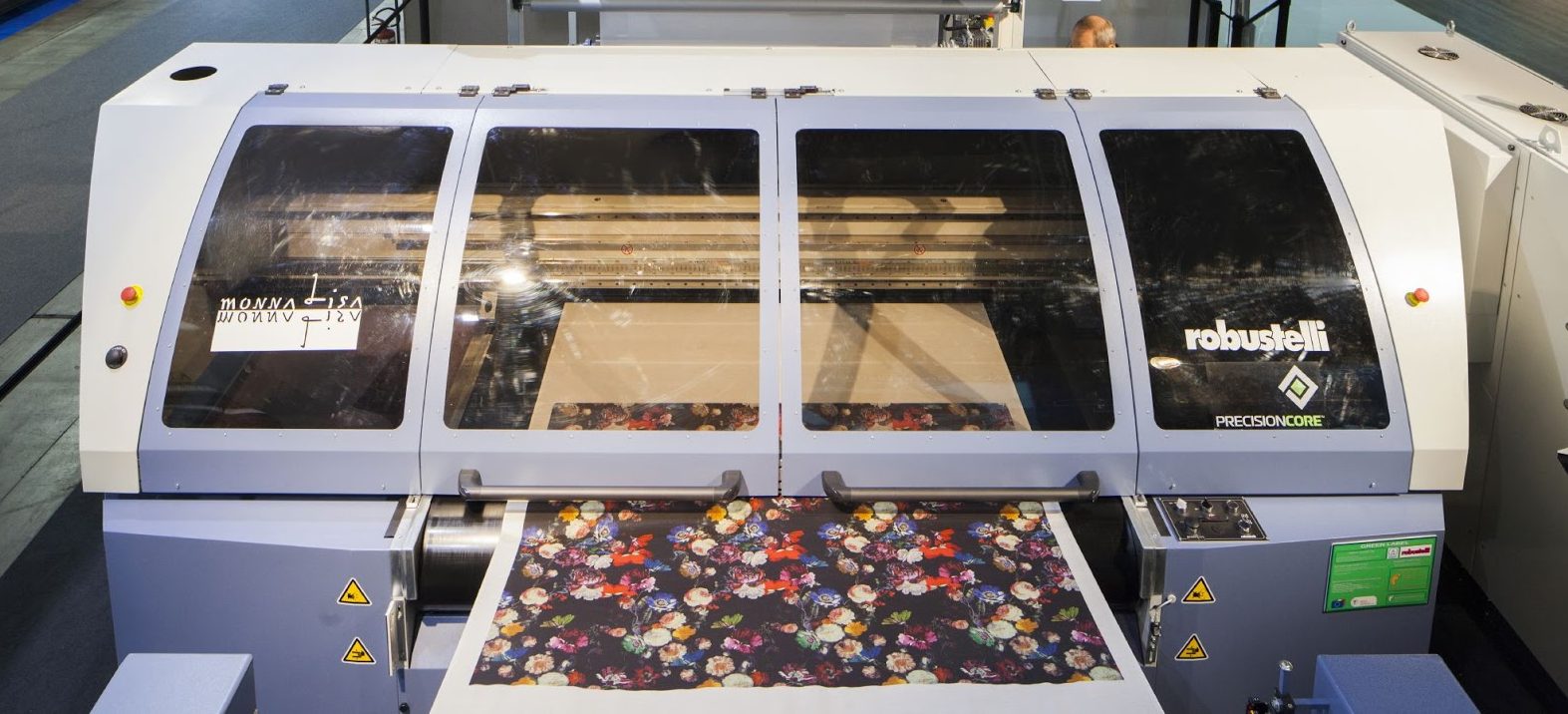
As remaining in Italy, we must mention others historical producers: MS and Reggiani today both to US capital, Arioli and, of recent entry in the textile sector, the Durst of Brixen. Reggiani, today EFI Reggiani, introduced the new versatile and compact RENOIR Next for entry-level printers and, in collaboration with DuPont, of which has the exclusive, presented the new pigment ink DuPont Artistri PK2600 suitable especially to printing on cotton and polyester with yield and results comparable to inks reactive.
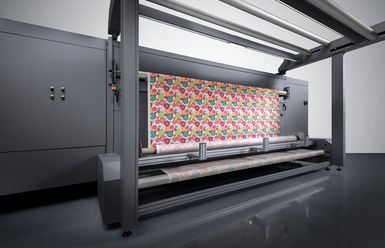 In direct competition with screen printing, Durst has introduced its Alpha line, eight-colour digital camera with 64 heads Alpha-S with a native resolution of 600 dpi and a speed of 460 linear meters per hour, which is at the level of the previous series Kappa. Certified OEKO-TEX Standard 100, using reactive ink GOTS certified and new pigment inks Ink Alpha P used on different types of tissue and that do not require pre- and post-treatment for cotton and polyester. For an industrial level of production of fabrics for furnishings he has proposed Alpha 330, while for transfer printing and sublimation for polyester, the Alpha 180 TR. Durst offers with the cars even its simplified workflow TWS (Textile Workflow System). Here’s a video explaining its Alpha.
In direct competition with screen printing, Durst has introduced its Alpha line, eight-colour digital camera with 64 heads Alpha-S with a native resolution of 600 dpi and a speed of 460 linear meters per hour, which is at the level of the previous series Kappa. Certified OEKO-TEX Standard 100, using reactive ink GOTS certified and new pigment inks Ink Alpha P used on different types of tissue and that do not require pre- and post-treatment for cotton and polyester. For an industrial level of production of fabrics for furnishings he has proposed Alpha 330, while for transfer printing and sublimation for polyester, the Alpha 180 TR. Durst offers with the cars even its simplified workflow TWS (Textile Workflow System). Here’s a video explaining its Alpha.
Still among the Italian producers, Arioli this with the first machine installed, the ArioPrint-16, operating from September at SaraInk the printing of fabric Clerici, at Como, implement 10 MonnaLisa already operating for years. The new ArioPrint operates with 16 heads Kyocera KJ4-B dual channel and has a print area of 450 mm and can print 500 m / h linear.
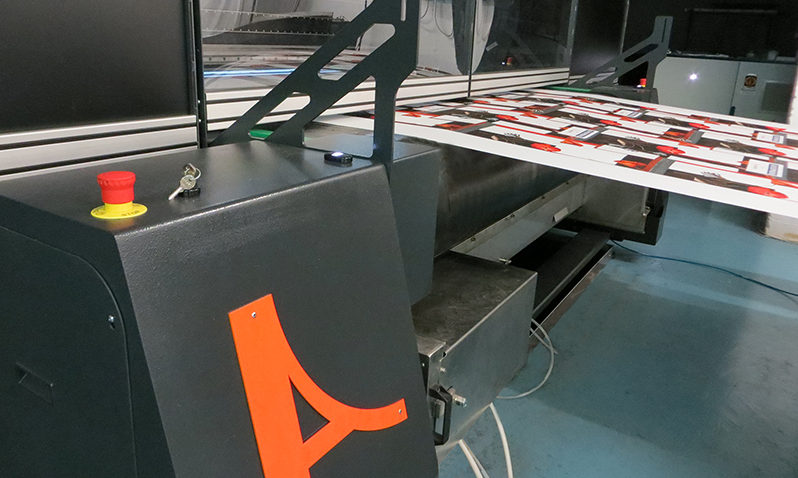
The historic Italian MS Printing Solutions – in the capital of financial Dover who also owns three manufacturers of inks – can be considered by tradition, with its Lario on the market since 2011, the leader in digital single-pass high in production ‘order of thousands of meters per hour. Here we only mention that some models Lario can mount up to more than 200 print heads and they were installed, in addition to those of Miroglio plant in Govone more than a dozen in Europe, America and Asia. Paolo Milini, CEO of MS Printing Solutions provides an exponential expansion of the installations in the coming years. If Lario was until recently the only single pass on the market, the ITMA 2015 occurred several competitors. Let’s see them at a glance.
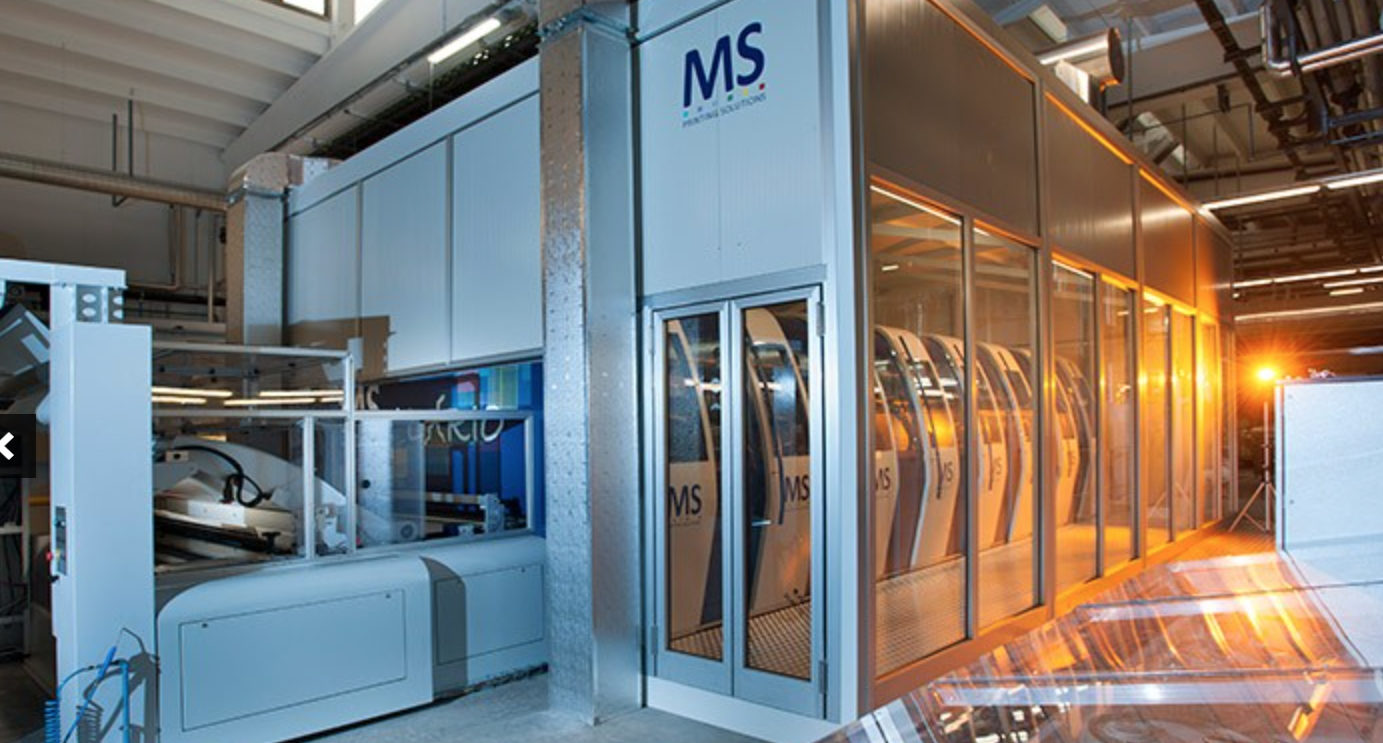
SPGPrints presented a new printhead PIKE, developed for textile printing, technology-based Fujifilm Samba, characterized by an enlarged distance between the nozzle and the media, to precede the release or even thick fabrics like velvet and tuft.
Konika Minolta Nassenger with the new SP-1, which we presented at the opening of the Training Center of Bregnano, machine equipped with heads and proprietary inks and a control technology that enables droplets to vary from 4 to 7 according to the picoliter printing needs. SP-1 to the Japanese company joins the two solutions scan, Nassenger Nassenger 8 and 10, which we refer.
The Korean Pyung Ahn Co. introduced the brand new and few noticed, Paco in two versions with single pass, PACO-Single SA and PACO-Single SG It is a machine of high industrial production of large format absolutely new and which at the time did not have much information on the productivity that exceeds all other single-pass seen so far.
Finally to mention, Atexo, trade name of VEGAone of Chinese production of Honghua, but was not present at ITMA because at the moment is reserved for the local market.
Scan and plotter
The printing system with heads that scans the fabric advancing step by step is the most diffused including flatbed printers and plotters; choosing the system scan and single pass is just a matter of productivity and organization within the company.
There were numerous industrial machines present at ITMA 2015. Besides the afore mentioned Mona Lisa, the Reggiani EFI, Durst, the Nassenger 8:10 Konica Minolta, already known in the market, the choice is now very wide.
Fenix Digital Group made its debut in the textile industry with agreements with two Japanese Shima Seiki for printing an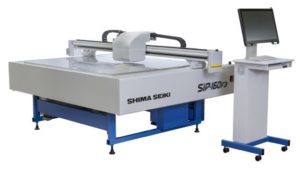 d cut tables, on which we will return, and with Miyakoshi of which has its European premiere the series MTP for textile printing roll to roll. The historic Japanese company is well known in the field of graphic printing for the production of machines for offset printing, label printing and
d cut tables, on which we will return, and with Miyakoshi of which has its European premiere the series MTP for textile printing roll to roll. The historic Japanese company is well known in the field of graphic printing for the production of machines for offset printing, label printing and
continuous. The MTP in three different sizes of print (1800, 2400 and 3400 mm) at a speed of 800 m / h with a resolution of 1200×1200 dpi, and uses four types of ink: acid, disperse, reactive and pigment print heads Kyocera in various resolution modes and equipped with control of the drop and printing unidirectional / bidirectional. The cart is equipped with anti-collision sensors sensitive to prevent tissue damage caused by loose or stuck and an optical sensor is installed before the entrance of the transport system for the control of tissue if improperly glued on the tape.From India, we mention the two machines from Colorjet: Metro and Fabjet Duo.
Metro is an industrial machine to 7 colours suitable for water based inks and, thanks to the technology synchronized even in the pigment. Among the observed characteristics, we mention a system of automatic adjustment of the temperature and the VPC integrated technology that ensures a smooth flow of pigment based inks.
The Fabjet-Duo, as the name implies, is a machine with ink supply system that allows the choice with a simple switch to move from reactive ink or pigment dispersed. With a print width of 3.20 meters it is suitable in particular in cotton and polyester. The group’s director, Pavan Gupta, ensures that machines Colorjet are built with state of the art technology.
From Turkey we remember Optimum Digital Planet company based in Istanbul which has presented its latest technologies in the field of textile printing: Picasso Tex & Nirvana. Picasso Tex is a machine for digital textile printing width of 320 cm and a quality of 2880 dpi with a speed of up to 420 m² / h. It has 8 printheads Konica Minolta KM 1024 the (4 + 4) with drops from 9 to 14 pl, suitable for all types of ink textile ii. The machine is complete with dry system air line and halogen lamps.
The new Nirvana is considered the car “Game Changer” in the printing textile with a speed up to 640 m² / ha 2880dpi for polyester, cotton and other fabrics like. Equipped with 16/24 or 32 printing heads is equipped with a series of control systems and automatic regulation of voltage and power of the fabric and automatic cleaning of the heads.
Moving on to the plotter systems, we start from the super-wide Mutoh ValueJet 1938TX of Belgian, a large format plotter rounder suitable for printing fabrics for furniture, fashion, sea and flags, a variety allowed by the distance of 6 mm between the nozzle and the tissue . Use proprietary inks to pigment-based water for cotton, silk, rayon and blends, and may also be used for transfer printing with sublimation inks series DS2 and dispersed DD for direct printing on polyester. The production is 40 m²/ h with the three dimensions of the drop. It is available in four colours and with the addition of white for direct printing.
Mimaki unveiled a new direct-to-textile inkjet printer for fast, high quality sample or small-lot production, the Mimaki TX300P-1800, an innovative 1.8 meter roll-to-roll direct-to-textile inkjet printer. Designed specifically for direct-to-textile printing, the Mimaki TX300P-1800 8-colour inkjet printer features a new printhead that ejects ink droplets at high speed to ensure accurate ink droplet placement with a high head gap. This makes the printer ideal for printing high quality images on all types of fabrics, including thicker and textured materials. Other features include a print resolution of up to 1080 dpi with drop sizes ranging from 6 to 24 pl. Small droplets create beautiful high-resolution printing, and large droplets are useful for high-speed printing. Print speeds is more than twice as fast as that of a conventional printer at up to max 68 m²/hour.
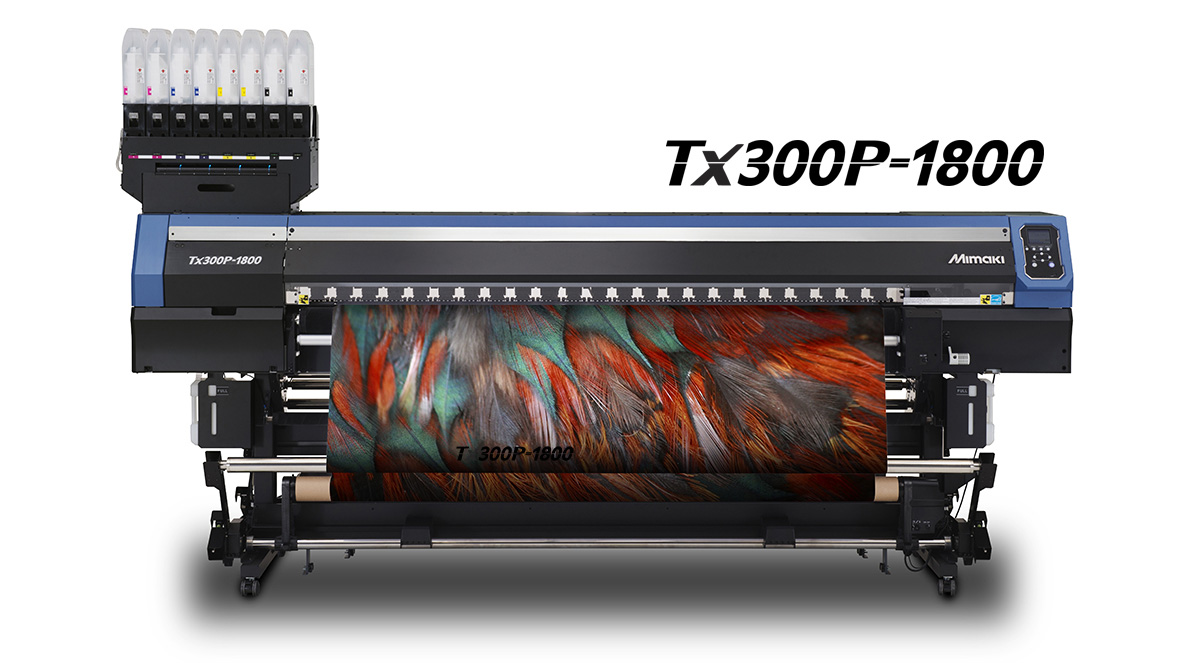
Without pointing to industrial production, Roland DG send a message to stylists, designers and craftsmen technology of digital printing: the real-time demonstration of the workflow from concept dress ended and another to demonstrate the potential applications of digital technologies fashion and ready to wear, sportswear, interior decoration. To this end, the visitors were also distributed the “guide to the sublimation” a manual that explains the techniques, secrets and the infinite potential of sublimation to explain the advantages that plotters print & cut and printers sublimation Roland DG can generate.
A surprise debut was Luescher-Tschudi GmbH that introduced the new T-REX 320 machine. In the Hall 7 their booth was very busy on all the days of the exhibition enabling the specialists of the Swiss company to answer questions and show all the different types of printed fabrics and the very high printing speeds. All the visitors have confirmed that the most brilliant and attractive printed colours on textiles in the exhibition could be seen printed on the T-REX 320. This is because Luescher-Tschudi offer the full package of Swiss Solution, that includes some photographs taken at the booth showing how visitors were interested to understand the technical details of the machines and discuss commercial details with the Luescher-Tschudi staffs and technicians.
Equipped with Konica Minolta print heads KM1024i MFA it works at 360 and 720 dpi with a productivity of 230 m²/ h roll-to-roll for various textile applications with reactive ink and pigment. The T-Rex is completed by a system of thermofixing Quikfix Neo fabrics for the width of 2.6 and 3.2 meters. T-Rex printing on polyester for soft signage, and Trevira for light fabrics for furniture
SPGPrints, the Dutch company deriving from Stork specializes in machines and prepress systems for screen printing, presented in addition to its digital inkjet printers already known, the best LEN 7412 which has installed the first machine at Nuova Fotoincisione Ripamonti in Merone, Northern Italy. It is a new generation machine than the previous 2008, to direct laser engraving of frames for screen printing. Following Sergio Ripamonti, sales manager at Fotoincisione this machine increases the speed of engraving of 10% in addition to greater accuracy.
Remaining in the field of screen printing, Kornit Digital unveiled the new system Vulcan cheap printing. Vulcan is a machine inkjet rival of screen printing for medium runs and long, able to reduce costs by 40%. According Kornit is capable of producing 250 quality garments in one hour. It comes with 60 print heads in six colors plus white.
From Austria printing niche platform for printing using dye bath (vat dy) designed by Zimmer with DyStar. The press vat dye represents only 3% of the textile printing market, but compared to the digital inkjet printing is now a volume quite important. The new system will be on the market around the middle of 2016 and is currently based on four colours – yellow, blue, black and red – with enhanced digital inks to the print heads Fujifilm Starfire, already used on printers of Colaris Zimmer, whose family was presented Colaris 3 (third generation) that uses 64 heads Fujifilm Dimatix Starfire widths up to 5 meters and a production of 1,670 m²/ h; and the more modest Colaris Infiniti 1.8 meters.




